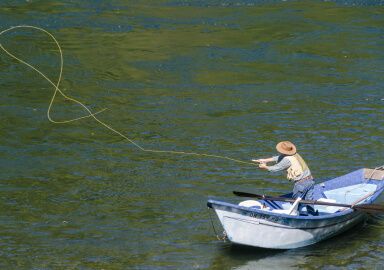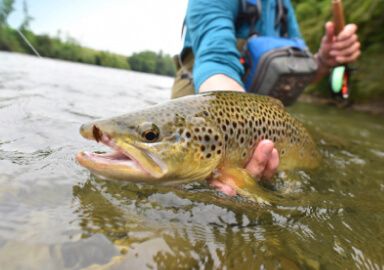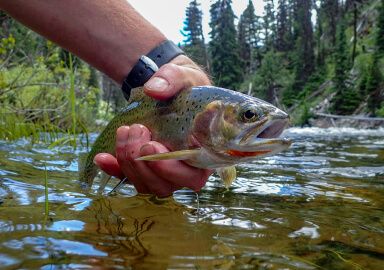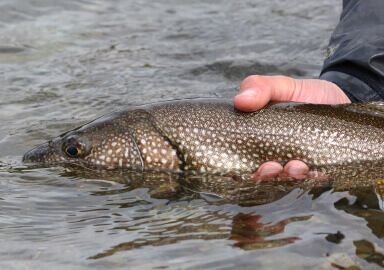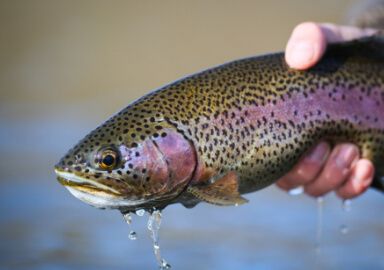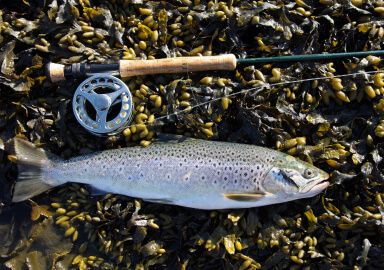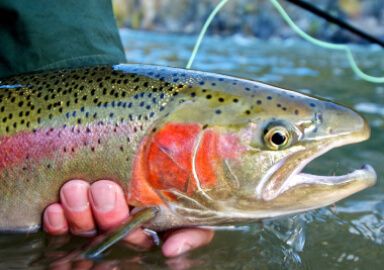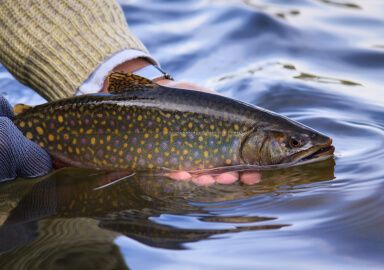Bull Trout
The elusive bull trout, with its stunning colors and fierce fight, is a prized catch for anglers in North America’s cold, clear waters.
View 8 listings
8
listings
–
price starting from
2
countries
–
to the nearest trip
Where and When?
Bull trout are found in cool, mountainous regions of North America, particularly in Western Canada, Montana, Idaho, Washington, and Oregon. Notable locations for bull trout fishing include Alberta’s Bow River, Idaho’s Salmon River, and British Columbia’s Kootenay River. The best seasons for bull trout fishing are spring and fall, when water temperatures are cool, and they are more active. Bull trout often migrate upstream to spawn in late summer and early fall, making this an ideal time for anglers to find them in shallower waters. In winter, they retreat to deeper pools and lake areas, where they remain active but are more challenging to locate.
About Bull Trout
The bull trout (Salvelinus confluentus) is a striking, native North American char known for its pale, creamy spots over a greenish-brown to silver body. The most conspicuous feature that differs it from lake troutlake trout and brook trout is that bull trout has neither spots nor stripes on its dorsal fin. Telling it apart from Dolly Varden is trickier, it’s usually done by the shape of the head: Dolly Varden’s is more rounded and blunt, and bull trout’s is rather pointy.
These fish grow impressively large, with some reaching over 30 inches (76 cm) and weighing more than 20 pounds, though smaller individuals are more common. Spawning takes place in late August or early September, and the fish often undertake migrations from bigger and deeper areas of rivers and lakes to shallower places and smaller brooks for the purpose. Known for their aggressive feeding habits, Bull trout prey on smaller fish, insects, and even small mammals, delivering powerful strikes and a thrilling fight for anglers.
As a member of the salmonid family, it thrives in pristine, cold, and fast-moving rivers and lakes across the Pacific Northwest and Western Canada, including the Rocky Mountain region. Bull trout can inhabit only the cleanest and coldest waters, making them a great indicator of a healthy aquatic environment. Sadly, dam construction and pollution caused a decline of this wonderful species in many areas and several local extinctions, for example in California. Bull trout is considered vulnerable, and is a strictly catch-and-release species in most areas.
How to Catch?
Bull trout fishing requires a patient approach and strong tackle, as these fish are known for both power and endurance. Streamers, minnow patterns, and large nymphs are effective for fly fishing, especially in clear rivers. Swinging or drifting large flies with natural colors can mimic prey fish and attract bull trout, which often sit in deep pools or near structure. Prime fishing spots include rivers, deep mountain lakes, and cold tributaries where these fish hunt smaller species.
For spinning anglers, using medium to heavy tackle with lures such as spoons, spinners, and crankbaits is a good choice. Bull trout are particularly drawn to lures that mimic small fish, and slow, steady retrieves can provoke strikes. Fishing near deep pools, drop-offs, or submerged logs can increase success rates, as bull trout use these structures to ambush prey.
Bull trout are powerful fighters that put even seasoned anglers to the test. Whether fishing by fly or spinning, they offer a thrilling and rewarding challenge in some of the most beautiful, untouched waters of North America. Before you go fishing after bull trout, however, double-check its conservation status: in many areas it is illegal to target bull trout purposefully, and should you hook one unintendedly, you must immediately release the fish, without even taking it out of the water for a trophy pic. A reputable guide will help you ID the fish and advise on its conservation status, another reason to book a guided backcountry trip on BaitYourHook.com!




